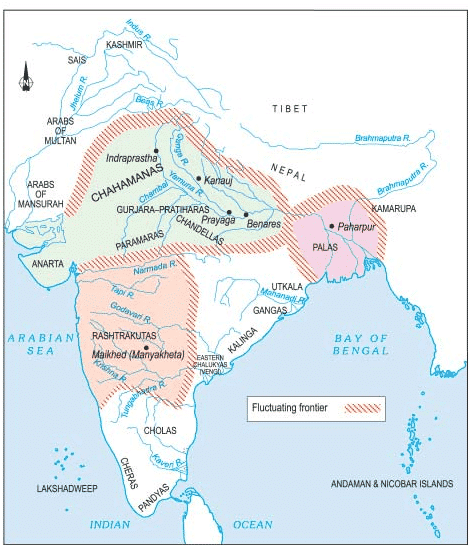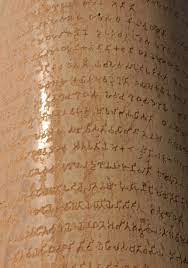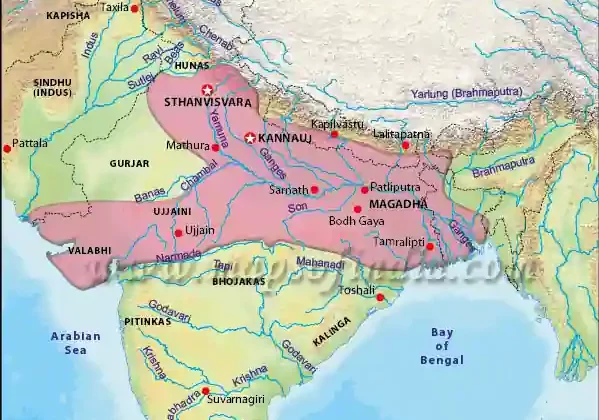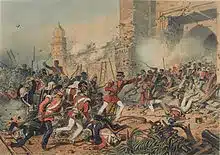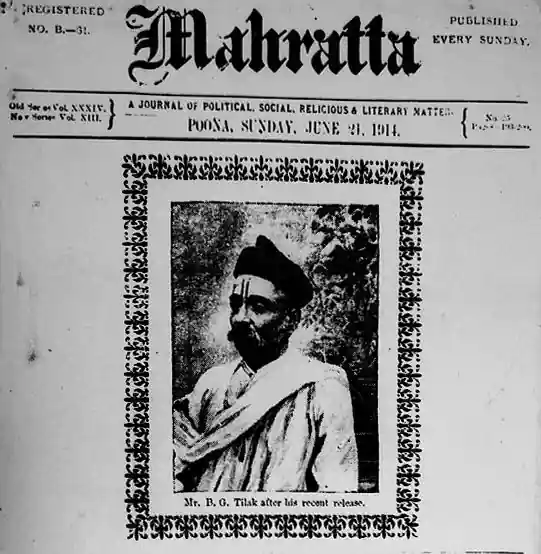List of Important Foreign Travelers Who Visited India
Travelers who came to India wrote their own accounts which deal with its unique focus areas. Some travelers wrote about the affairs of the court while some focused on contemporary style of architecture and monuments or depicted the social and economic life. Every such account presents a true picture of the then Indian Civilisation. A key thing to note that no account of any
women traveler is available.
Deimachos
- Period: (320-273 BC)
- Greek Ambassador
- Came India in the reign of Bindusara ( “Amitragatha” ).
Megasthenes
- Period: (302-298 B.C.)
- He was an ancient Greek historian, diplomat and explorer in the Hellenistic period. He was born around 350 BC. Megasthenes visited India between 302 to 288 BC as an ambassador of Greek warrior Seleucus I Nikator. He visited the Maurya capital Pataliputra during the reign of Chandragupta Maurya who was the founder of Maurya dynasty.
- He described India in his book Indica. Unfortunately, the original copy of this book was lost. Later, famous Greek writers such as Arrian, Strabo, Diodorus, and Pliny referred to Indica in their works.
- Indica described the sub-continent as a quadrilateral shaped country, bounded by the ocean on Southern and Eastern side. It also gives us the detail of soils, rivers, plants, animals, administration and the social and religious life of India.
- His book also communicated that Indians worshiped Lord Krishna during that time and there existed seven castes in India. He founded two major aspects of Indian caste system, i.e. endogamy and hereditary occupation.
Ptolemy
- Period: 130 A.D.
- From Greece and Geographer.
- Wrote “Geography of India” which gives the description of Ancient India.
Fa-Hien
- Period: (405-411 A.D.)
- Chinese Buddhist Monk
- Came to collect Buddhist manuscript.
- His Travelogue “Records of Buddhist Kingdoms” (Fo-Kwo-Ki).
- His book details about the religious and social life of Indians at that time.
- He was a Chinese Buddhist monk who visited India during the reign of Vikramaditya (Chandragupta II). Chandragupta II first Gupta to issue silver coins.
- He is known for his visit to Lumbini, the birthplace of the Buddha.
- He visited Peshawar, Taxila, Mathura, Kannauj, Sravasti, Kapilavastu, Sarnath and many other places.
- He wrote about cities like Taxila, Pataliputra, Mathura, and Kannauj in Middle India. He declared Patliputra as a very prosperous city.
Hiuen-Tsang
- Period: (630-645 A.D.)
- Chinese Buddhist Monk
- He was also known as Xuanzang and the Prince of Pilgrims.
- Visited India during the reign of Harshavardhana.
- Came through Tashkent and Swat Valley.
- Book is “Si-Yu-Ki or the Buddhist records of the western world”.
- Many details of administrative, political, religious, economic and social conditions during those days in India can be found. However, the descriptions were biased so as to glorify Buddhism and praise King Harshavardhana.
- As per his account, Prayag was a prominent city and the importance of Pataliputra was replaced by Harshavardhana’s capital Kannauj.
- Sravasti and Kapilavastu had lost their religious importance and instead, Nalanda (Bihar) and Vallabhi (Gujarat) became the centres of learning.
- He had been guest of Bhaskar Varman, ruler of Kamarupa. From their he was called to the court of Harshavardhana.
- According to him, Nalanda university was founded by Kumargupta-1. At Nalanda, three Buddhism courses : Theravada, Mahayana, Vajrayana. Four caste system continued. Executioners and Scavengers lived outside cities.
- He spent 5 years at the University of Nalanda and studied under Acharya Shilabhadra.
I-tsing
- Period: ( 671- 695 A.D.)
- Chinese traveller
- Visited India in connection with Buddhism.
- His works are Biographies of Eminent Monks. Gives useful information about the social, religious and cultural life of the people of this country.
Al-Masudi
- Period: (957 A.D.)
- He was an Arab historian, geographer and explorer. He was also known as the “Herodotus of the Arabs”.
- Gives an extensive account of India in his work “Muruj-ul-Zahab”.
Al- Beruni or Abu Rehan Mahamud
- Period: (1024-1030 A.D.)
- Uzbekistani Mathematician and Astronomer.
- Came along with Mahmud Ghazni during one of his Indian raids.
- He was the first muslim scholar to study India.
- He is considered father of Indology.
- He translated several Sanskrit works, including Patanjali’s work on Grammar. Conversely, he translated Euclid’s (Greek Mathematician) works into Sanskrit.
- Wrote : Tarikh-al-Hind/Kitab-ul-Hind (History of India).
Marco Polo
- Period: (1292-1294 AD)
- His work “The Travels of Marco Polo” which gives an invaluable account of the economic history of India. His book mentioned that China had large area and great wealth.
- He was a European (Venetian) scholar. In India, Marco Polo stopped by in both Tamil Nadu and Kerala.
- He visited Southern India during the reign of Rudramma Devi of Kakatiyas and Madverman & Kulshekhara of Pandyas of Madurai.
Ibn Battuta
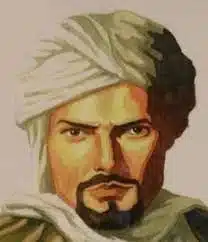
- Period: (1333-1347 A.D.)
- He was a Moroccan traveller.
- He visited India during reign of Mohammed Bin Tughlaq.
- The account of Ibn Battuta is often compared with that of Marco Polo who also visited both India and China.
- ‘RIHLA’ is the book written by him.
- Ibn Battuta was fascinated by Paan (Betel leaves) and Coconut and wrote descriptively about them in his accounts. He even compared coconut with a human’s head while writing about it.
- According to him, female slave system in India. Streets were crowded and markets were colorful.
- He also mentions that the postal system was very efficient then which was not only used to send information and remit credit across long distances but was also used to dispatch goods.
Shihabuddin al-Umari
- Period: (1348 A.D.)
- Came from Damascus
- He gives a vivid account of India in his book “ Masalik albsar fi-mamalik al-amsar”.
Nicolo De Conti
- Period: (1420-1421 A.D.)
- He was an Italian (Venetian) merchant.
- He visited India during the reign of Devraya I of Sangam dynasty of Vijayanagar Empire.
- Given a graphic account of Vijayanagaras capital.
- In Mylapore (in Chennai), he found the tomb of St. Thomas which ensured the presence of Christian community in India. He confirmed the gold and spice trade amongst India, Sumatra and China.
- He referred Telugu language as “Italian of the East”.
- De’ Conti described South-East Asia as “overtaking all other regions in terms of wealth, culture and magnificence”.
Abdur Razzaq
- Period: (1443-1444 A.D.)
- Persian traveller, Ambassador of Shahrukh of Timurid dynasty.
- He came to the court of King Zamorin of Calicut, as an ambassador of Shahrukh (the Timurid Dynasty Ruler of Persia) in 1442.
- He visited the Vijayanagara Kingdom at the time of Dev Raya II.
- Given a brief account of this countryside, in his Matla us Saddin wa Majuma ul Baharain.
Athanasius Nikitin
- Period: (1470- 1474 A.D.)
- Russian merchant
- Visited South India in 1470.
- He describes the condition of the Bahmani kingdom under Muhammad III (1463-82).
- His narrative “The journey beyond 3 seas”.
Duarte Barbosa
- Period: (1500-1516 A.D.)
- Portuguese traveller
- He has given a brief description of the government and the people of Vijayanagar Empire.
Domingo Paes
- Period: (1520-1522 A.D.)
- He was a Portuguese merchant, writer and explorer.
- He visited the court of Krishnadeva Raya of Vijayanagar Empire.
- He recorded his journey in his book named “Chronica dos reis de Bisnaga” where he provided indepth information about Vijayanagara Empire.
- He reported the following features about that empire:
- Advanced irrigation technology that allowed the peasant to produce high yielding crops at very low prices.
- A wide variety of cultures were shown in crops and vegetation.
- He described a busy market of precious stones.
- The city was prospering and its size was comparable to Rome, with abundant vegetation, aqueducts and artificial lakes
Fernao Nuniz
- Period: (1535-1537 A.D.)
- Portuguese merchant
- Came during the rule of Achyutdeva Raya of Tuluv dynasty of vijayanagar Empire.
- Wrote history of the empire from its earliest times of the closing years of Achyutdeva Raya’s reign.
John Hughen Von Linschotten
- Period: (1583 A.D.)
- Dutch traveller
- Given a valuable account of the social and economic life of South India.
Captain William Hawkins
- Period : ( 1608-1611 A.D.)
- He was a representative of the English East India Company and an ambassador of the British King James-I.
- He came to India in 1608 and travelled to Agra in the court of Mughal Emperor Jahangir to negotiate for the establishment of a factory at Surat.
Sir Thomas Roe
- Period: (1615-1619 A.D.)
- He was an English diplomat and a member of the House of Commons during the reign of Queen Elizabeth I..
- Visited India during the reign of Jahangir.
- He came to seek protection for English factory at Surat.
- His “Journal of the Mission to the Mughal Empire” is treasured contribution to the history of India.
Edward Terry
- Period: (1616 A.D.)
- Ambassador of Thomas Roe.
- Describe about Indian social (Gujarat) behaviour.
Franciso Palsaert
- Period: (1620-1627 A.D.
- Dutch traveller stayed at Agra.
- Gave a vivid account of the flourishing trade at Surat, Ahmadabad, Broach, Cambay, Lahore, Multan etc.
Peter Mundy
- Period: (1630-34 A.D.)
- Italian traveller
- Came in the reign of the Mughal Emperor, Shahjahan.
- Gives valuable information about the living standard of the common people in the Mughal Empire.
John Albert de Mandesto
- Period: (1638 A.D.)
- German traveller
- Reached Surat in 1638 A.D.
Jeen Baptiste Tavernier
- Period: (1638-1668 A.D.)
- French traveller
- Visited India 6 times in the reign of Shahjahan and Aurangzeb.
- Compared India to Iran and the Ottoman Empire.
- In his book, he has extensively discussed about diamond and the diamond mines of India. He is popular for his discovery/purchase of Blue diamond that he subsequently sold to Louis XIV of France.
Nicolao Manucci
- Period: (1638-1717 A.D.)
- Italian traveller
- He wrote a first hand account of the Mughal Empire.
Francois Bernier
- Period: (1656- 1717 A.D.)
- French physician and Philosopher.
- According to him, Mughal’s owned all land, and distributed among Nobles. No private property unlike Europe. There is no ‘Middle Class’, only rich and poor.
- Danishamand Khan, a noble of Aurangzeb was his patron.
- He was in India from 1656-1668.
- He visited India during the reign of Shah Jahan.
- He was physician to Prince Dara Shikoh and later was attached to the court of Aurangzeb.
- ‘Travels in the Mughal Empire’ was written by Francois Bernier.
- The book mainly talks about the rules of Dara Shikoh and Aurangzeb.
- He severely criticised the Mughal empire calling them king of beggars and barbarians.
- He felt that artisans had no incentives to improve the quality of their products since the profit was appropriated by the State.
- Merchants were organised in their caste-cum-occupational bodies like Mahajans, Sheths and Nagarsheth.
Jean de Thevenot
- Period: (1666 A.D.)
- French traveller
- Given an account of cities like Ahmadabad, Cambay, Aurangabad and Golconda.
Gemelli Careri
- Period: (1695 A.D.)
- Italian traveller who landed at Daman.
- His remarks on the Mughal emperor’s military organisation and administration are important.
Also refer :


